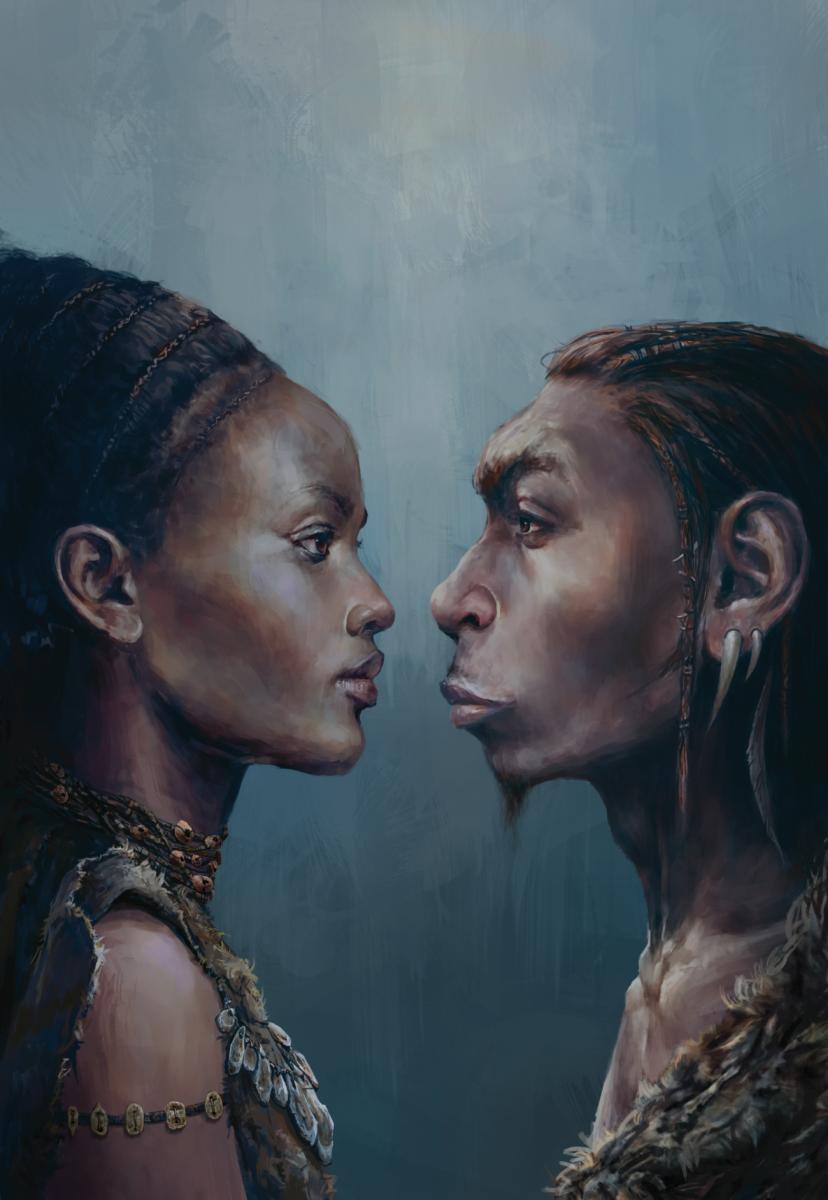News
05.09.2022
What fossils reveal about hybridization of early humans
Researchers from the Senckenberg Centre for Human Evolution and Palaeoenvironment at the University of Tübingen and from the University of Cape Town analyze how hybridization affected the skeleton
Many people living today have a small component of Neanderthal DNA in their genes, suggesting an important role for admixture with archaic human lineages in the evolution of our species. Paleogenetic evidence indicates that hybridization with Neanderthals and other ancient groups occurred multiple times, with our species‘ history resembling more a network or braided stream than a tree. Clearly the origin of humankind was more complex than previously thought.
It is essential to use multiple lines of evidence to investigate the impact of such hybridization. Ancient DNA is rarely well-preserved in fossil specimens, so scientists need to recognize possible hybrids from their skeletons. This is vital for understanding our complex past and what makes us human. Professor Katerina Harvati of the Senckenberg Centre for Human Evolution and Palaeoenvironment at the University of Tübingen, Germany, together with Professor Rebecca R. Ackermann of the Human Evolution Research Institute at the University of Cape Town, South Africa, have investigated the impact of hybridization using fossil skulls and identified individual potential hybrids in the past. Their work has been published in the journal Nature Ecology and Evolution.
Careful analysis of the data
To do this, the researchers investigated a large number of fossil remains of ancient humans from the Upper Paleolithic of Eurasia, dating to approximately 40 to 20 thousand years ago. Several of these individuals have yielded ancient DNA showing a small component of Neanderthal ancestry in their genes, reflecting their recent admixture with this group. Their skull bones were compared with (unadmixed) samples from Neanderthals and early, as well as recent, modern humans from Africa. The researchers examined three regions of the skull: the mandible, the braincase and the face, for tell-tale signs of hybridization. "These might include, for example, intermediate morphology compared to Neanderthals or modern humans, dental abnormalities or unusual sizes. These are features we see in hybrids of various mammals, including primates," Harvati and Ackermann explain. Their study showed that signals of hybridization were evident in braincases and jaws, but not in faces.
In the individuals with known genetic background, the researchers also considered whether signs of hybridization on the skeleton matched the percentage of Neanderthal ancestry. The fact that it didn’t suggests that “the presence of particular genetic variants is probably more important than the overall proportion of Neanderthal ancestry," the researchers say.
Harvati and Ackermann also identified some of the individuals studied as potential hybrids, including individuals from the Middle East – well-known to be a region of contact for the groups – but also beyond, in both Western and Eastern Europe. However, "where possible, individual hybrid status should be confirmed using genetic data, and as such we consider these identifications as hypotheses to be tested," says Harvati. This was the first study of its kind, she says, adding that “we hope this encourages researchers to look more closely at these fossils and combine multiple lines of evidence for identifying hybridization in the fossil record."
Innovator of evolution
In other organisms – from plants to large mammals – hybridization is known to produce evolutionary innovation, including outcomes that are both novel and diverse. "It is estimated that about 10 percent of animal species produce hybrids, including, for example, bovids, bears, cats and canids," Ackermann says. Hybrids are also known in primates, our close relatives, such as baboons, she says. "Because hybridization introduces new variation, and creates new combinations of variation, this can facilitate particularly rapid evolution, especially when facing new or changing environmental conditions."
Hybridization, therefore, may have provided ancient humans with genetic and anatomical features which gave them important advantages when spreading from Africa across the world, resulting in our physically diverse and evolutionarily resilient species, state the authors.
Publication:
Harvati K., Ackermann R.R.: Merging morphological and genetic evidence to assess hybrid-ization in Western Eurasian Late Pleistocene hominins. Nature Ecology & Evolution, https://doi.org/10.1038/s41559-022-01875-z
Contact:
Prof. Dr. Katerina Harvati
University of Tübingen
Institute for Archaeological Sciences
Senckenberg Centre for Human Evolution and Palaeoenvironment
+49 7071 29-76516
katerina.harvati@ifu.uni-tuebingen.de
Prof Rebecca R. Ackermann
University of Cape Town
Human Evolution Research Institute
Department of Archaeology
+27 21 650 2356
becky.ackermann@uct.ac.za
Contact for press:
Eberhard Karls Universität Tübingen
Public Relations Department
Dr. Karl Guido Rijkhoek
Director
Janna Eberhardt
Research Reporter
Telefon +49 7071 29-77853
Fax +49 7071 29-5566
janna.eberhardt@uni-tuebingen.de
All press releases by the University of Tübingen

